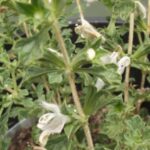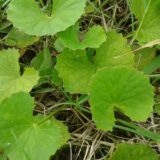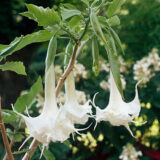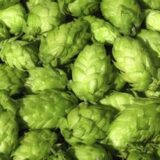Natural Herbal Teas That Have Sedating Effects

What Are The Best Herbal Teas For Sedation?
Herbal teas are used for sedation around the world by people for many reasons. There are people who suffer from insomnia and have major trouble falling asleep at night, sometimes it is so bad it affects their job. Some people have hyperactivity (such as ADD or ADHD) and require a natural way to balance themselves out. When someone has has been really stressed out, it is nice to have a natural way of relieving anxiety and winding down at the end of the day. Traditionally, there are many drinks which are concocted for sedation as a part of a religious ritual or ceremony. Herbal teas for sedation have even been used for grieving. Reasons aside, people around the world have used herbal tea blends as natural sedatives for thousands of years, and the practice continues even today.
Herbal Tea Ingredients With Sedative Effects
A lot of sedating herbal tea recipes exist which can be a combination of these plants, or just one. Some of these plants are more powerful sedatives than others and the list is in no particular order.
Blue Lotus Flower
Blue Lotus Flower is one of the strongest natural, legal sedatives. It is mostly known for its strong cultural and religious significance throughout the Egyptian region…especially to the ancient Egyptians. The ancient Egyptian empire, in fact, used Blue Lotus quite frequently and it seems to have been a very large part of their culture. Blue Lotus can create a very strong sedating tea and can help reduce anxiety, alleviate stress and promote a happy mood. Some people describe it as a euphoric mood enhancer. Jolly Lotus (sold by the ounce) is one of the best brands of Blue Lotus, with a high content of alkaloids.
 Skullcap (Scutellaria pekinensis)
Skullcap (Scutellaria pekinensis)
Skullcap is a member of the mint family and grows almost everywhere around the world. The name comes from a resemblance to a medieval-style helmet. The Chinese know this herb for its inclusion in many medicinal remedies. In fact, it has been used medicinally for over 2000 years. It is a popular ingredient in herbal teas for its calming and overall sedating effects. Skullcap can calm down even the most anxious, energetic person.
Hops (Humulus lupulus)
Hops is used most notably today as an additive for beer (mostly for flavor). The plant has gone back than being an ingredient for beer, and has significant place in ancient and traditional medicines. Hops has been used as a strong, sedating herbal tea as far back as the Ancient Greeks and Romans. It is commonly found in many sedating herbal tea blends today and is picking up in popularity among herbal tea drinkers around the world.
Chamomile (Matricaria chamomilla)
Chamomile is one of the most well-known herbal teas for relaxation and tension-relief. Chamomile has been employed around the world for its ability to quash anxiety and promote serene tranquility. It is also used to promote peaceful sleep. Chamomile is frequently used with other herbs in herbal tea blends, however, is such a strong sedative that it is able to be brewed alone with outstanding effects.

Kratom (Mitragyna speciosa)
The Kratom plant has been known for thousands of years to provide analgesic and sedative effects to many native cultures of Asia. It is mostly indigenous to New Guinea, Thailand, Malaysia, and Indonesia, though it is now cultivated in many tropical and subtropical regions of the world. Kratom is used a variety of ways, but traditionally has been employed as an herbal tea. It is considered a ceremonial tea in many cultures, but also has been adopted as a recreational tea. The social drink is quite sedating and is still enjoyed today.
Passion Flower (Passiflora incarnata)
Passion Flower’s history is thick, ranging from use in the Old World, and throughout ancient Mexico, Central and South American tribes. It has been known to be employed as a powerful sedative that rivals present day benzodiazepines (such as Valium). It is very commonly found in a variety of sedative products around the world (especially in Europe), and is a popular choice as an herbal tea sedative.
Valerian (Valeriana officinalis)
Valerian is very frequently suggested as a remedy for stress, anxiety, tension, insomnia and depression. It has noticeable sedative effects which make it a popular item to stock in nearly any pharmacy or dietary supplement store. Valerian is often considered far more powerful as a natural sedative when brewed into a tea, rather than consumed within capsules (extract or powdered root). Valerian is such an effective natural sedative it is commonly recommended by medical professionals, doctors included.
Ashwagandha (Withania somnifera)
Ashwagandha is a nightshade and native to India, Nepal, Yemen and China. It has been used to make relaxing herbal teas that are consumed at night to help calm the mind before sleep. Cultures of its native regions, as well as Ayurvedic medicine, consider the plant for its stress-relieving effects.
 “Intoxicating Mint” (Lagochilus inebrians)
“Intoxicating Mint” (Lagochilus inebrians)
Sometimes referred to as the “intoxicating mint” by the Indians of some Central Asian territories, it creates mild sedative effects which can help curb anxiety and promote relaxation. It is a common ingredient in many herbal tea blends for sedation, though, it can be expensive and is sometimes considered too pricey for its payoff (as Intoxicating Mint is not nearly as effective as many of the other plants on this list for sedative effects).
Kava Kava (Piper methysicum)
Kava is a versatile herb, being used as a social lubricant and stimulant in light doses, but as a sedative in heavier doses. There are strong herbal teas made from kava which have powerful sedating, euphoric and relaxing effects. The drink is popularly consumed by many cultures of the Pacific, especially throughout Polynesia. It is unfortunately considered quite harmful in heavy consumption, leading to jaundice and liver problems. Still, its overwhelmingly popular use in some parts of the world make it worth noting.
Many Herbal Tea Recipes For Sedation
These may be the most popular plants used to brew sedating herbal teas, but there are many more. Some plants are less commonly used due to a lack of research, while others have simply fallen through the cracks of time. Regardless, there are countless herbal tea blends which have employed many plants for their relaxing properties, some of which are more prominent in one culture over another. Taking the time to try the effects of each plant independently has always been a great way of finding the perfect herbal tea for the desired level of sedation. After all, some of these plants have been used by some tribes to induce full sedation, even sleep, while others are meant to merely “mellow” one’s anxiety and create light calming effects. And in the end, all plants metabolize differently from person to person. A herb that may have strong sedative effects for one person, may be nearly ineffective (or by far TOO effective) for another person; Every one experiences herbal teas differently.




